
Like most things these days, licenses come in many different varieties. Depending on the license and the parties’ circumstances, several different considerations may come into play. Here are a few of the important provisions that frequently need to be considered in a license.
1. License Grant
The license grant provision sets out what is being licensed and describes the scope of the license. For software licenses, the license grant may name a software application or provide access to a SaaS portal, and may identify the number of users, processors or locations authorized to use the software. A licensee should negotiate a scope of license calculated to accommodate not only current needs but also further growth and commercial focus.
2. Restrictions
The license may contain express restrictions, such as prohibitions on reverse engineering, sub-licensing or use for the benefit of third parties. Among other things, a licensee should evaluate whether its disaster recovery plan, corporate affiliate structure, and anticipated end-use will violate any of the restrictions.
3. Exclusive or Non-exclusive
Licenses may be “exclusive,” which means that only the licensee can use the thing licensed – not even the licensor can use it. A “non-exclusive” license permits a licensor itself to use the thing licensed, and to license it to other parties. A “sole” license generally permits both the licensor and licensee to use the thing licensed, but no other party. A licensee seeking an “exclusive” license usually pays a premium for that privilege, and must typically pay minimum royalties or license fees.
4. Field of use
Licenses and exclusivity provisions may be limited to certain fields of industry or application. Such limitations may allow licensors flexibility to license to the “strongest” licensee in each field, thus maximizing licensing revenue. As with license scope, a wise licensee will carefully evaluate future business plans to ensure relative freedom to operate as desired during the life of the license.
5. Territory
License agreements often contain restrictions on where a licensee may use the thing licensed. Often, territory restrictions result from commercial considerations like those for field of use restrictions. In some cases, however, territoriality restrictions may result from legal requirements, such as export laws and privacy regulations. Licensees seeking a multi-country license must often convince licensors of their business prospects in each of those countries.
6. Sublicensing
Sublicensing rights are particularly important for licensees that include third-party solutions in their product offerings. Many software companies, for example, will through-license third party applications to their end-users. Or, a licensee with distribution and sale rights may desire to sublicense sale rights to certain independent retailers. As another example, for licenses that involve manufacturing rights, a licensee may wish to have another party manufacture some or all the licensed technology, and if so, the license should expressly allow for that.
7. Transferability
Licenses often restrict the licensee from selling the license agreement or obligations under the agreement to third parties. That may be because the licensor does not want to risk license revenue on an unknown third party or inadvertently leak technology to a rival. Licensees typically want the flexibility to sell their business assets – license and all. Parties often compromise by requiring licensor consent before transfer, or allow a licensee to transfer the license along with the business to which the license pertains.
8. Affiliates
For licensees that use one company to procure technology for a group of affiliates, expressly addressing such activity (and appropriately defining “affiliates”) in the license will avoid headaches down the road. For companies with an active M&A history, addition and divestiture of affiliates should be squarely addressed, along with any competitive concerns and degree of permitted disclosure of confidential information during buying and selling affiliates.
9. Improvements
Technology does not – or at least should not – stagnate. From a licensee’s standpoint, the license should preferably include a reasonable amount of licensor improvements, and the parties should address who will own licensee-created improvements. The respective costs and responsibilities for continued R&D should be reflected in the license price.
10. Confidentiality, Publications, and Data Security
These provisions address both the degree of publicity that the license “deal” will receive, and how the parties will treat the information that they exchange and develop under the license. Some licensors will ask for permission to brag about the license. Conversely, licensees often desire to keep such information secret for competitive purposes. For trade secret licenses, the confidentiality obligations will be paramount. For other types of licenses, such as SaaS licenses, transmission of legally-sensitive data (such as personal health and financial information) requires careful analysis of the risks involved.
11. Warranties
The license warranties can provide a base level of assurance regarding quality and ability to use the thing licensed. Basic warranties can address conformance to technology documentation and the level of skill at which services are performed. Some warranties might address whether use of the technology will infringe third-party intellectual property. Warranties may come with expiration periods, and so a careful licensee will want to ensure that warranty periods are long enough for defects to be discovered.
12. Liability, Indemnification, and Insurance
These “risk” provisions address how much each party will be liable to the other party or third parties for damages arising out of the license relationship. Licenses typically limit the liability of one party or the other, and limit different types of damages. Indemnification obligations typically require one party to defend the other party against certain types of lawsuits and other risks, such as patent infringement lawsuits, or product liability lawsuits.
13. Consideration and Minimum Payments
The “economic” provisions of the license are typically negotiated early on, and embody each party’s sense for risk and reward under the license. These provisions may take a wide variety of forms, such as periodic license fees and per-unit royalties, and may be scaled per a variety of factors, such as sales volume or license “seats.” A licensor will typically incentivize a licensee to actively commercialize under the license. Licensees typically look for a long commercialization runway, or a low threshold for staying current under the license.
14. Term and Termination
Term and termination provisions set out the ways in which the license may end. Some will expire after a set term, while others may renew automatically. Licensees concerned with business continuity (such as technology companies passing technology through to end users) will want to restrict the licensor’s termination options, and allow protective provisions to survive termination.
15. Reporting and Audits
Licensors often require licensees to report compliance with the license to make sure that the licensee is paying the correct number of fees. Licensees will try to minimize those obligations, and protect themselves from inadvertent non-compliance.
16. Governing Law, Venue, and Dispute Resolution
The location where license disputes must be resolved can be a big deal for a small company. Rather than fight over whether the small company must travel to another state, the parties might agree to arbitration in a mutually-inconvenient location under a “neutral” but well-established body of law. Typically, licensees and licensors seek a collaborative and mutually-beneficial relationship, and so dispute escalation clauses may be used to encourage face-to-face resolution of issues before they degenerate into vindictive feuds.
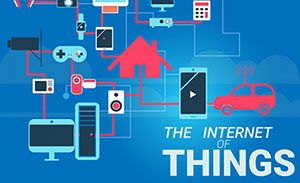 It’s all the rage now: you speak out loud to the internet connected device in your home and poof! An Uber/Lyft car appears at your doorstep. Pretty great and a huge timesaver, right? Or you’ve seen that commercial where the husband on the beach chair locks his SUV from one thousand miles away. Wow, problem averted, right? Well, not so fast.
It’s all the rage now: you speak out loud to the internet connected device in your home and poof! An Uber/Lyft car appears at your doorstep. Pretty great and a huge timesaver, right? Or you’ve seen that commercial where the husband on the beach chair locks his SUV from one thousand miles away. Wow, problem averted, right? Well, not so fast.
 Thanks to Voice over Internet Protocol (VoIP) and ever-improving cloud technologies, the phone-service options available to you as a small business are plentiful, with more features at a lower cost than were ever available before.
Thanks to Voice over Internet Protocol (VoIP) and ever-improving cloud technologies, the phone-service options available to you as a small business are plentiful, with more features at a lower cost than were ever available before.

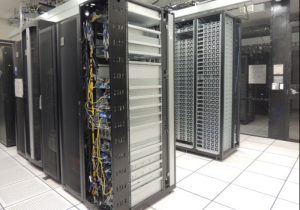 Technology departments have moved far beyond break fix solutions. Across industries, IT is asked to develop innovative solutions that support enterprise needs surpassing standard computing to support the mission and vision of the organization. At UTSA this often means research.
Technology departments have moved far beyond break fix solutions. Across industries, IT is asked to develop innovative solutions that support enterprise needs surpassing standard computing to support the mission and vision of the organization. At UTSA this often means research.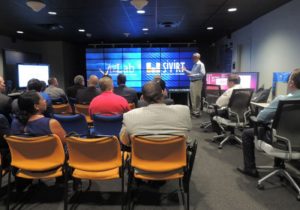 The RCSG is working to make sure that the technology available is not simply perceived as a novelty but are teaching tools that can be used to create interactive approaches to learning and research. The technology and resources are available at no additional cost to faculty and students. An increase in interest and use of these impressive resources to enhance and expand research at UTSA is anticipated. From research on interactive teaching visualizing Maya and other architectural sites to predicting tumor growth, the research possibilities are endless.
The RCSG is working to make sure that the technology available is not simply perceived as a novelty but are teaching tools that can be used to create interactive approaches to learning and research. The technology and resources are available at no additional cost to faculty and students. An increase in interest and use of these impressive resources to enhance and expand research at UTSA is anticipated. From research on interactive teaching visualizing Maya and other architectural sites to predicting tumor growth, the research possibilities are endless.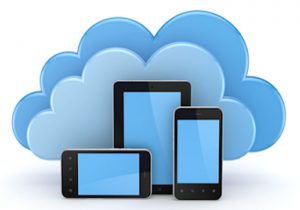 There’s no doubt about it – the Internet and mobile and cloud computing have made our lives easier and our businesses more productive, cost-effective and competitive. But make no mistake about it: the Internet is also a breeding ground for thieves and predators, not to mention an enormous distraction and liability if not used properly. It is causing people to be casual, careless and flat-out stupid about their privacy in an increasingly litigious society where heavy fines and severe reputational damage can occur with one slip up – which is why you cannot be casual or careless about introducing it to your organization. You can’t turn on the TV or read a newspaper without learning about the latest online data breach. And mobile devices are easily misplaced and stolen. Because of all of this, if you are going to allow employees to use mobile devices – particularly personal mobile devices – to access, store and use company data, then it’s critical that you have these 7 security measures in place.
There’s no doubt about it – the Internet and mobile and cloud computing have made our lives easier and our businesses more productive, cost-effective and competitive. But make no mistake about it: the Internet is also a breeding ground for thieves and predators, not to mention an enormous distraction and liability if not used properly. It is causing people to be casual, careless and flat-out stupid about their privacy in an increasingly litigious society where heavy fines and severe reputational damage can occur with one slip up – which is why you cannot be casual or careless about introducing it to your organization. You can’t turn on the TV or read a newspaper without learning about the latest online data breach. And mobile devices are easily misplaced and stolen. Because of all of this, if you are going to allow employees to use mobile devices – particularly personal mobile devices – to access, store and use company data, then it’s critical that you have these 7 security measures in place.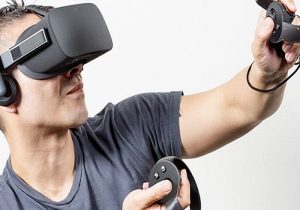 According to SuperData Research in 2016, investment in Virtual Reality (VR) will be $3 Billion. This is up from $1.9 Billion in 2015. Consider 60% of investment funds target Gaming Development. Other investment funds target immersive and cinematic VR. With this level of investment, the future use of virtual reality will almost certainly become a main stream enjoyment for consumers and businesses.
According to SuperData Research in 2016, investment in Virtual Reality (VR) will be $3 Billion. This is up from $1.9 Billion in 2015. Consider 60% of investment funds target Gaming Development. Other investment funds target immersive and cinematic VR. With this level of investment, the future use of virtual reality will almost certainly become a main stream enjoyment for consumers and businesses.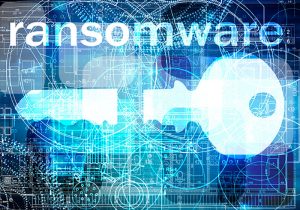 News headlines are rampant with accounts of ransomware attacks shutting down schools, hospitals and businesses across the country. Cyber criminals are infecting machines with malicious code, and then executing the code to encrypt and hold the data “hostage”. Once the ransom is paid, the attacker decrypts the data and returns the files to the user. In many cases, the longer someone waits to pay, the more money they have to spend to regain access to files.
News headlines are rampant with accounts of ransomware attacks shutting down schools, hospitals and businesses across the country. Cyber criminals are infecting machines with malicious code, and then executing the code to encrypt and hold the data “hostage”. Once the ransom is paid, the attacker decrypts the data and returns the files to the user. In many cases, the longer someone waits to pay, the more money they have to spend to regain access to files. Presented by Presidio
Presented by Presidio For the past eight years we have served small businesses as an outsourced IT provider. We have learned how they operate and how they view their IT needs. These businesses are too small to need or pay for an in-house IT employee so they look to an outside source to service them. So what is it that they need?
For the past eight years we have served small businesses as an outsourced IT provider. We have learned how they operate and how they view their IT needs. These businesses are too small to need or pay for an in-house IT employee so they look to an outside source to service them. So what is it that they need?